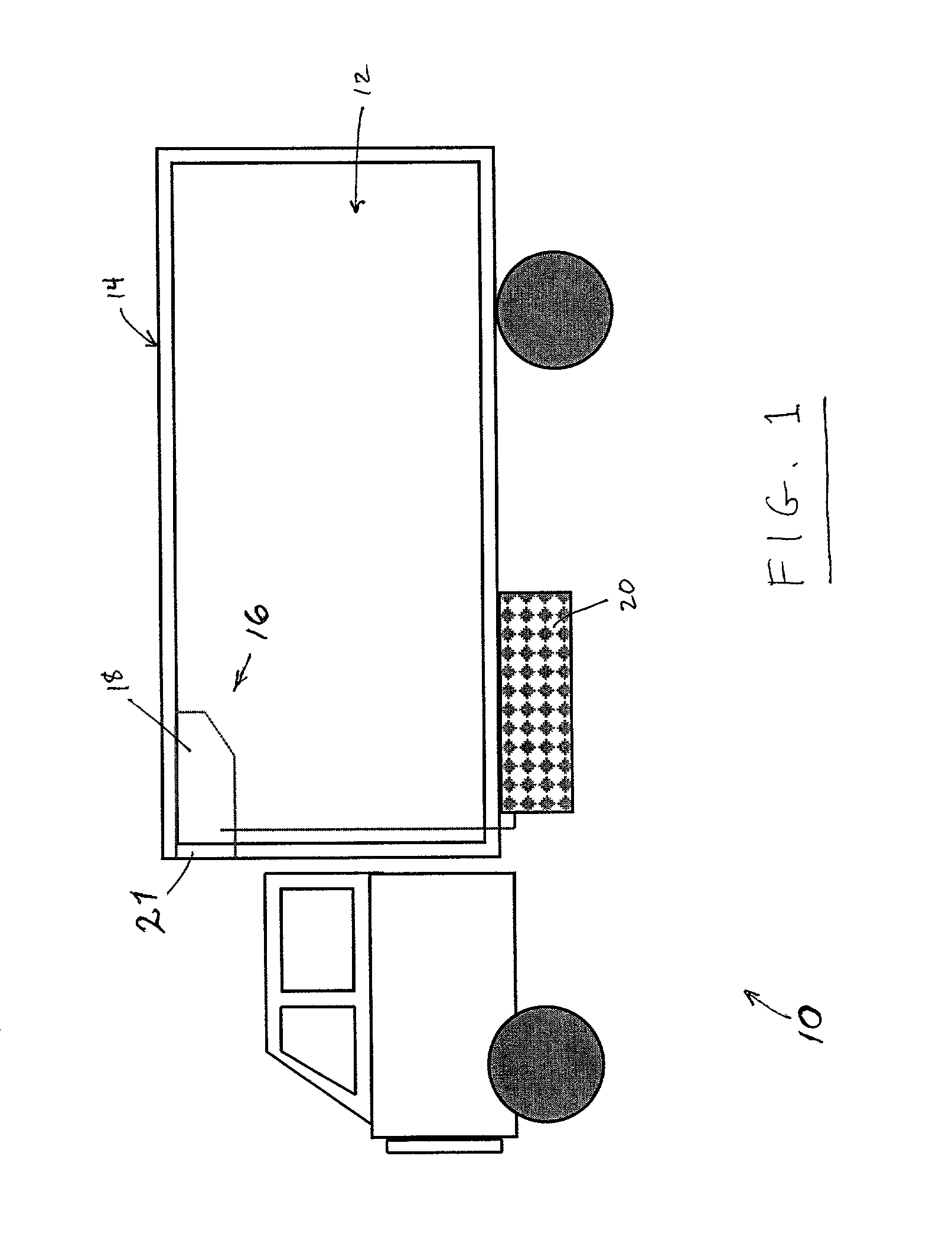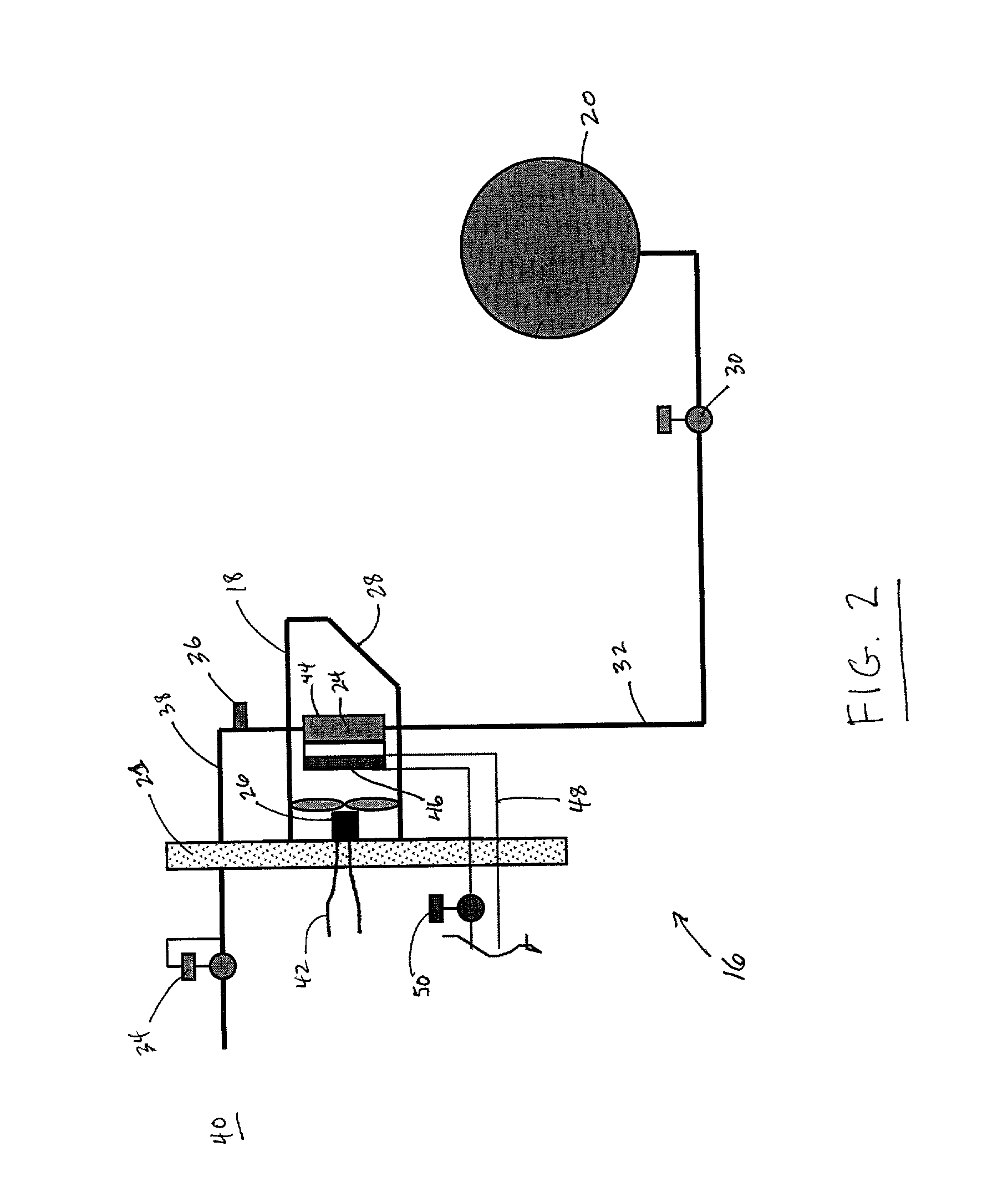Cryogenic refrigeration unit suited for delivery vehicles
a cryogenic refrigeration and vehicle technology, applied in the direction of defrosting, lighting and heating apparatus, domestic cooling apparatus, etc., can solve the problems of high maintenance cost, noisy, heavy, and high maintenance cost of typical mechanical systems, and achieve the effect of maintenance, and reducing the cost of maintenan
- Summary
- Abstract
- Description
- Claims
- Application Information
AI Technical Summary
Benefits of technology
Problems solved by technology
Method used
Image
Examples
Embodiment Construction
[0016] The present invention operates in conjunction with energy inherently present in a motor vehicle. For example, mechanical and electrical energy from the vehicle's engine may be utilized to fuel a heating coil and / or to drive a blower.
[0017] FIGS. 1 and 3 illustrate a truck 10 that includes an air-conditioned space 12 within its trailer 14. The air temperature within the air-conditioned space 12 is regulated by a temperature control system 16 that includes a temperature control housing 18 and a heat-absorbing fluid storage tank 20. The temperature control housing 18 is mounted within the air-conditioned space 12, although it may alternatively be mounted outside the air-conditioned space 12. The storage tank 20 contains a heat-absorbing fluid or cryogen, and is mounted outside of the air-condition space 12, although it may alternatively be mounted inside the air-conditioned space 12.
[0018] The temperature control housing 18 may be mounted horizontally to the ceiling of the trail...
PUM
 Login to View More
Login to View More Abstract
Description
Claims
Application Information
 Login to View More
Login to View More - R&D
- Intellectual Property
- Life Sciences
- Materials
- Tech Scout
- Unparalleled Data Quality
- Higher Quality Content
- 60% Fewer Hallucinations
Browse by: Latest US Patents, China's latest patents, Technical Efficacy Thesaurus, Application Domain, Technology Topic, Popular Technical Reports.
© 2025 PatSnap. All rights reserved.Legal|Privacy policy|Modern Slavery Act Transparency Statement|Sitemap|About US| Contact US: help@patsnap.com



